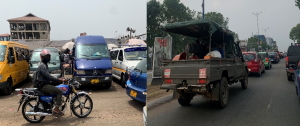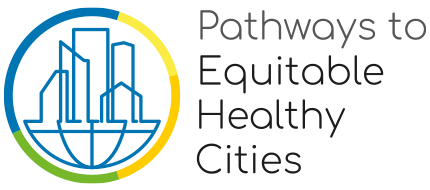The city of Accra
The city of Accra, like most cities in developing countries, is a city with a constantly changing boundary driven by population growth, migration and urban sprawl. Over the years, the city of Accra has been referred to as the Greater Accra Metropolitan Area (GAMA) due to the fast-expanding nature of the city to encompass the emerging central business district (CBD). The population of residents in GAMA has consistently increased over the years from 2.6 million in 2002 to 3.7 million in 2010 and 4.7 million in 2020. Most individuals live on the periphery of the city due to the high cost of rent but tend to work in or around the CBD. According to the World Bank, about half a million commuters travel to the CBD of Accra daily for various socio-economic activities.
The city of Accra has been developing in an uncoordinated way, with large pockets of slums, disconnected physical developments, and unauthorized buildings as well as luxurious leapfrog developments across the city. These areas are often not accompanied by needed urban services as they are built without any governmental coordination, and they lack adequate connections to a public transport system.

Picture: Various modes of transport in the city of Accra (right – peak hour traffic congestion; left – okada and trotro mini-buses).
Destination Accra! Accra! Accra!
The GAMA authorities have attempted and failed to establish a functional public mass transit system over the years, although the city had efficient bus and train systems in the early 1980s.
The traditional transport modes currently available are minibuses (trotros), taxis and private vehicles, with trotros and taxis as the most frequently used. The popular chorus heard on the streets during the morning peak hours is ‘Accra! Accra! Accra!’, the call of trotro conductors hoping to catch the attention of commuters seeking to go to the CBD. These commercial transport services are provided by unionized individuals such as the Ghana Private Road Transport Union (GPRTU), Ghana Co-operative Transport Union (GCTU), and Progressive Transport Owners Association (PROTOA). The largest union operating in the city of Accra is the GPRTU, with about 565 registered trotros and taxis as of 2014.
In recent years, the increasing urbanization, advancement of technology and rising traffic congestion have resulted in more mobility options such as public buses (ayalolo), motorcycle taxis (okada), tricycle taxis (keke). Commuters prefer motorcycle taxis to access major bus terminals due to poor road conditions, distant stations or long waiting times for other modes of transport, and to reduce travel time through traffic at peak times.
Ride-hailing services such as Uber, Bolt, Yango, Dropyn, and GoldCab have also become a common mode of transport in the city of Accra. The number of drivers signing on to these services is increasing by the day, with a total of 140,000 riders across all operators a year after commencing operations in Accra. This success may be attributed to the many transport challenges in the city coupled with the availability and comfort the ride-hailing services bring, as well as their use to provide medical emergency transport.
Transport challenges
The increasing demand for transport resources has been accompanied by an increase in car ownership. Currently, about 59% of all registered vehicles in Ghana are located in GAMA, where the total number of vehicles has increased from 53,900 in 1991 to 900,000 in 2014 according to the Driver, Vehicle and Licensing Authority (DVLA).
The city of Accra has a high number of registered vehicles belonging to individuals. This, coupled with the poor road network, results in heavy traffic congestions at peak times. A typical 10 kilometer trip of 30 minutes from Madina to Accra during off-peak time requires 120 minutes of travel time during peak time.
To meet the travel demand of the GAMA population and reduce the number of vehicles on the streets, the city will require about 2,400 public buses according to the Greater Accra Transport Master Plan (2016). However, implementation of the transport plan has been challenging due to the lack of bus terminals and dedicated bus lanes to operate a Bus Rapid Transit (BRT) system.
The future of transportation in Accra
The increase in the population and urban sprawl in the GAMA has led in recent years to large numbers of people living outside the city and working in the city. The need to travel within and around the city puts the existing transport infrastructure under pressure and the system is oftentimes unable to provide for the needs of the population. The poor, women, children and the elderly are often the most disadvantaged groups in the city.
It has become critical for the city authorities to succeed in establishing a functional public mass transit transport system in the city of Accra. This will go a long way to ensure full implementation of the Ghana transport policy set by the Ministry of Transportation in 2008, reduce traffic congestion in the city, contribute to the environmental sustainability policy of the city, and also greatly reduce inaccessibility and inequality in the city of Accra. This will ensure that everyone has equal access to services within and around GAMA.
